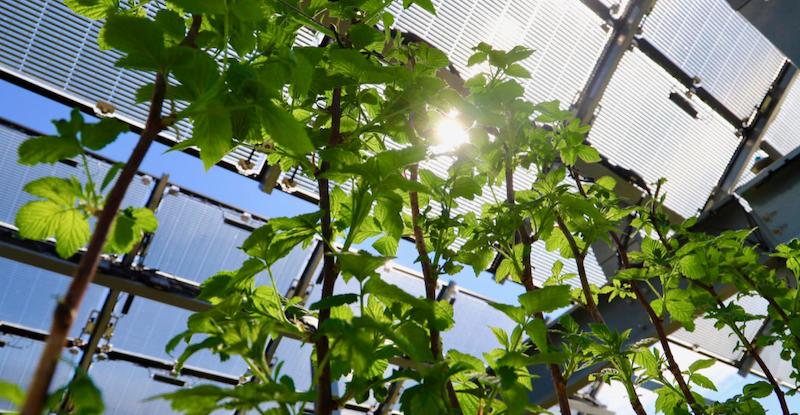Do., Apr. 20th 2023

(SwissTech) Insolight has developed an ingenious solution that combines solar power and plant production on the same cultivable surface.
Adapted to cultivation in greenhouses or under open-field shades, the Insolagrin solar modules are the fruit of an entrepreneurial journey begun in 2015 by three EPFL Lausanne graduates.
All three of us had a real interest in solar energy from the start. First and foremost, we wanted to find a way to improve electricity production efficiency through photovoltaic panels. Over time, agrivoltaics proved to be an interesting market to which we could contribute.
Mathieu Ackermann, CTO and co-founder of Insolight
Installed instead of agricultural plastic tunnels and greenhouse roofs, the special agrivoltaic solar panels are based on optical micro-tracking technology, offering dynamic light adjustment while maintaining an electrical yield. More than a simple photovoltaic installation, it is a tool for farmers that allows them to adjust the light transmitted to their crops.
This makes it possible to optimize plant photosynthesis over the seasons while converting excess light into electricity. The semi-transparency of the cells allows a large proportion of the light to pass through. The modules are also bifacial, which means they collect light on both their front and back sides. According to the company, this allows them to produce 30-50% more than other translucent solar panels.
In addition to the hardware, Insolight has developed a software to control the solar installation based on the data provided by light, temperature and humidity sensors installed near the plants. A feedback loop makes it possible to automate the deployment of an optical layer for adjustable shading.
To prove the effectiveness of the technology, Insolight has installed its solar cells with the help of Agroscope and the local electricity provider on a raspberries and strawberries farm covering an area of 165m2 in Conthey in the canton of Valais.
The results have been very promising and the company is now working on scaling up its product’s deployment and commercial rollout. For 2023, the goal is to deploy its first large-scale installations, initially serving berry growers in Switzerland and France.
The company then aims to replicate these first agrivoltaic installations globally and increase the number of targeted crops. For this venture, Insolight secured another CHF4.85 million in a financing round angekündigt in December 2022.
This article is from SwissTech.
